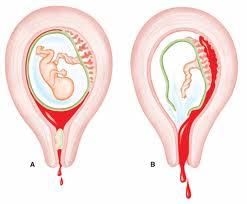Treatment of Habitual Abortion!
Treatment of Habitual Abortion
Homeopathic Treatment of Habitual Abortion
Acupuncture & Acupressure Treatment of Habitual Abortion
Psychotherapy Treatment of Habitual Abortion
Conventional / Allopathic Treatment of Habitual Abortion
Surgical Treatment of Habitual Abortion
Dietary & Herbal Treatment of Habitual Abortion
Other Treatment of Habitual Abortion
What is Habitual Abortion
Symptoms of Habitual Abortion
Causes of Habitual Abortion
Risk factors of Habitual Abortion
Complications of Habitual Abortion
Lab Investigations and Diagnosis of Habitual Abortion
Precautions & Precautions & Prevention of Habitual Abortion
Acupuncture & Acupressure Treatment of Habitual Abortion
Acupuncture can be used throughout the whole period of pregnancy. It will prevent abdominal pain, fetal excessive movement also smooth the labor process. Acupuncture helps in facilitating labor so that the women can give birth in less pain.
Psychotherapy Treatment of Habitual Abortion
Psychological treatment such as counseling or psychotherapy may be indicated for help in coping with the loss of the pregnancy. Some women may also benefit from attending support groups with other women who have experienced a Abortion Habitual.
Conventional / Allopathic Treatment of Habitual Abortion
Bacterial vaginosis should be treated daily for one week with the antibiotics metronidazole (Flagyl), Protostat) or clindamycin (Cleocin), either as pills taken orally or in a gel or cream form inserted into the vagina. Trichomoniasis is treated with either a large single dose of metronidazole or with a smaller dose taken twice daily for one week.
Surgical Treatment of Habitual Abortion
Salphingostomy – making an incision on the unruptured ectopic pregnancy site and milking out the disease.
Radical surgery – complete removal of the fallopian tube on the affected site.
Laparoscopy – opening the abdomen surgically.
Dietary & Herbal Treatment of Habitual Abortion
Avoid refined carbohydrates, sugars, non-vegetarian food, coffee and tea.
Avoid oily and fried foods.
Avoid Smoking, chewing tobacco and alcohol.
Other Treatment of Habitual Abortion
Yogic asanas such as sarvangasana, vajrasana, bhujangasana, shalabhasana, dhanurasana, paschimottashana and trikonasna are very useful.
What is Habitual Abortion?
Habitual abortion is a form of infertility. When miscarriage occurs repeatedly at a certain period of pregnancy, it is termed ‘habitual abortion’. It is sometimes due to chromosome abnormalities or other genetic causes. It is one of the most perplexing problems of gynaecology and a major cause of maternal mortality. A woman who has suffered two or more terminations of this sort -consecutively is said to be a case of habitual abortion.
Symptoms of Habitual Abortion
There are the two main symptoms of Habitual abortion.
Vaginal bleeding during pregnancy.
Pains of the same character as labour pains.
Causes of Habitual Abortion
Deficient functioning of the thyroid.
Congenital malformation of the uterus.
Faulty implantation of the fertilized ovum.
Chronic constipation.
Hypertension, chronic nephritis and diabetes
Blood group incompatibility of husband and wife.
Syphilis infections and fibroid tumors.
Risk factors of Habitual Abortion
Hyperhomocysteinemia
Obesity
Complications of Habitual Abortion
Bleeding
Excessive vomiting
Abortions
Ectopic pregnancy
Molar pregnancy
Diagnosis of Habitual Abortion
Diagnosis of spontaneous abortion is based on :
Expulsion of uterine contents
Pelvic examination
Laboratory Test
Human chorionic gonadotropin (hCG) in the blood or urine confirms pregnancy; decreased hCG levels suggest spontaneous abortion or tubal pregnancy. Pelvic examination determines the uterus’size and whether this size is consistent with the pregnancy’s length. Tissue histology indicates evidence of products of conception. Laboratory tests reflect decreased hemoglobin levels and hematocrit due to blood loss.
Precautions & Prevention of Habitual Abortion
More frequent prenatal visits
Follow recommended medical advice carefully.
Eat well-balanced diet.
Avoid alcohol and smoking.
Avoid using non-prescription drugs without medical advice.



+1.svg)
